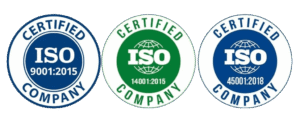Choosing the right tape is critical for ensuring packages remain secure during shipping, storage, or handling. Understanding the differences between heavy-duty tape vs regular tape helps businesses and individuals make informed decisions for durability, efficiency, and cost-effectiveness.
1. What Is Regular Tape?
- Standard adhesive tape used for light to medium packaging tasks.
- Commonly available in clear or brown colors.
- Suitable for general household, office, or small e-commerce shipments.
Pros:
- Affordable and widely available
- Easy to handle and apply
- Sufficient for light packaging tasks
Cons:
- Limited strength for heavy or bulky items
- May peel or fail under rough handling or moisture
2. What Is Heavy-Duty Tape?
- Designed for industrial and high-stress applications.
- Strong adhesive, thicker backing, and superior tensile strength.
- Ideal for heavy boxes, fragile items, or long-distance shipping.
Pros:
- High durability and adhesion
- Maintains integrity in extreme conditions
- Reduces risk of package damage
Cons:
- Higher cost per roll
- May require a dispenser or tape gun for efficient application
3. Key Differences Between Heavy-Duty and Regular Tape
| Feature | Regular Tape | Heavy-Duty Tape |
|---|---|---|
| Strength | Light to medium | Heavy-duty, strong adhesive |
| Durability | Short-term, light use | Long-term, high-stress use |
| Cost | Low | Higher |
| Best For | Small packages, office use | Industrial, shipping, fragile items |
| Application | Hand-applied | Often used with dispensers for efficiency |
4. When to Use Each Tape
Use Regular Tape:
- Home or office tasks
- Lightweight packages
- Temporary sealing
Use Heavy-Duty Tape:
- Shipping heavy or fragile items
- Industrial packaging and storage
- Long-distance or high-volume operations
5. Tips for Maximizing Tape Performance
- Apply tape at consistent pressure and alignment.
- Store tape in a cool, dry place to maintain adhesive quality.
- Use the correct dispenser or tape gun for heavy-duty rolls.
- Test tape on the surface before sealing high-value shipments.
Conclusion
Both heavy-duty tape and regular tape have their place in packaging and shipping. Regular tape is cost-effective and suitable for light tasks, while heavy-duty tape ensures durability and security for industrial or high-volume applications. Choosing the right tape depends on package weight, fragility, and shipping conditions.
Primary CTA: Explore Heavy-Duty Packaging Solutions
Location: Carewell Group Pty Ltd, Unit 27/191, McCredie Road, Smithfield, NSW 2164
Phone: +61 0477 123 699
Email: sales@carewellgroup.com.au
Smart Tip: For businesses handling diverse shipment sizes, keeping both regular and heavy-duty tape in inventory ensures efficiency, cost-effectiveness, and reliable package protection.










